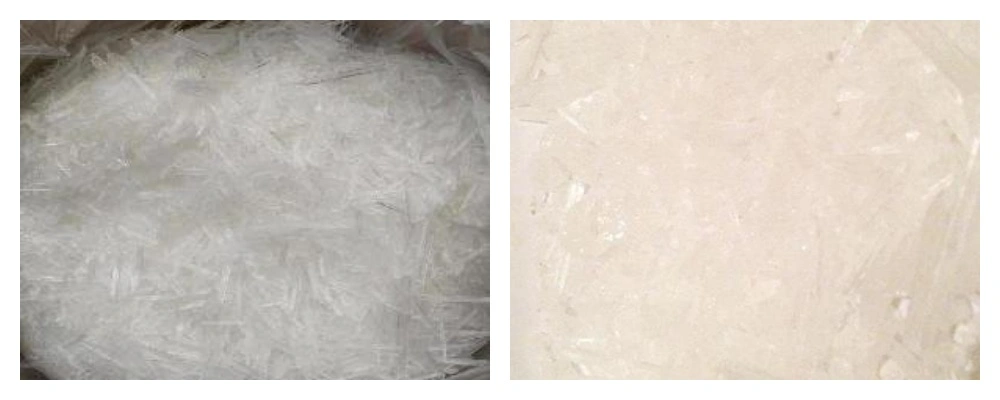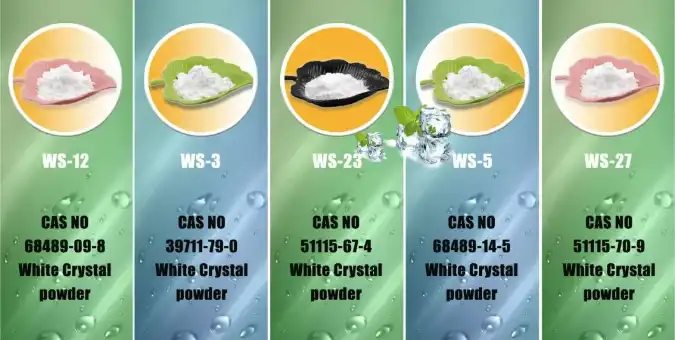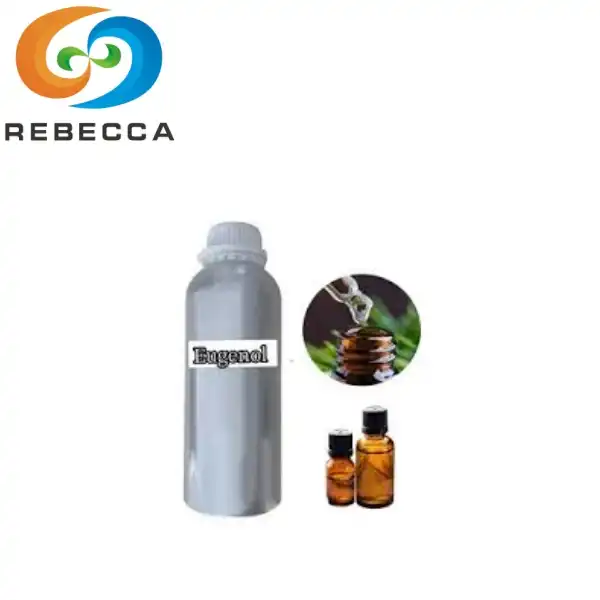WS 23 Cooling Agent VS Other Cooling Agent: Why is it so popular?
In the world of cooling agents, WS 23 has emerged as a front-runner, captivating the attention of pharmaceutical, cosmetic, and food industries alike. Its popularity stems from a unique combination of attributes that set it apart from traditional cooling agents. WS 23, also known as N,2,3-Trimethyl-2-isopropylbutanamide, offers a long-lasting cooling effect without the characteristic minty odor associated with menthol. This odorless and tasteless property makes it incredibly versatile, allowing for seamless integration into a wide array of products. Moreover, WS 23 boasts a higher potency compared to many other cooling agents, meaning smaller quantities can achieve the desired effect, potentially leading to cost savings for manufacturers. Its stability across various pH levels and temperatures further enhances its appeal, ensuring consistent performance in diverse formulations. As consumers increasingly seek novel sensory experiences in their products, WS 23's ability to deliver a clean, refreshing sensation without overpowering other flavors or scents has solidified its position as a go-to cooling agent in the market.

What Is WS 23 Cooling Agent?
Chemical Structure And Properties
ws 23 cooling agent, chemically known as N,2,3-Trimethyl-2-isopropylbutanamide, possesses a unique molecular structure that contributes to its exceptional cooling properties. This compound belongs to the family of carboxamides, which are known for their ability to interact with sensory receptors in the skin and mucous membranes. The specific arrangement of atoms in WS 23 allows it to bind effectively to these receptors, triggering a cooling sensation without actually lowering the temperature of the surrounding tissue. One of the most notable properties of WS 23 is its high stability across a wide range of pH levels and temperatures. This stability ensures that the cooling effect remains consistent even when incorporated into various formulations, making it a reliable choice for product developers. Additionally, WS 23 is soluble in both water and oil, enhancing its versatility in different product bases.
Mechanism Of Action
The cooling sensation provided by WS 23 is the result of its interaction with specific ion channels in sensory neurons. Primarily, WS 23 activates the TRPM8 (Transient Receptor Potential Melastatin 8) channels, which are also known as cold and menthol receptors. When these channels are activated, they allow an influx of calcium ions into the neuron, triggering a signal that the brain interprets as a cooling sensation. Interestingly, while WS 23 activates the same receptors as menthol, it does so in a slightly different manner. This difference in activation leads to a cooling effect that is perceived as cleaner and less aggressive than that of menthol, contributing to its popularity in various applications.
Potency And Duration
One of the key factors contributing to the popularity of WS 23 is its high potency. Compared to many other cooling agents, WS 23 can produce a noticeable cooling effect at much lower concentrations. This high potency not only allows for more efficient use of the ingredient but also helps in reducing potential side effects associated with higher doses of cooling agents. Furthermore, the cooling sensation produced by WS 23 is known for its long-lasting nature. While some cooling agents provide an immediate but short-lived effect, WS 23 offers a sustained cooling sensation that can persist for an extended period. This prolonged effect is particularly valuable in applications where a long-lasting cooling sensation is desired, such as in oral care products or long-wear cosmetics.

Comparative Analysis: WS 23 vs. Other Cooling Agents
WS 23 vs. Menthol
When comparing WS 23 to menthol, one of the most widely used cooling agents, several key differences emerge. Menthol, derived from peppermint or other mint oils, has been a staple in cooling products for decades. However, WS 23 offers several advantages over this traditional cooling agent. Firstly, WS 23 is odorless and tasteless, whereas menthol has a strong minty scent and flavor. This characteristic of WS 23 makes it more versatile, allowing it to be used in a broader range of products without altering their intended flavor or fragrance profiles. Additionally, WS 23 provides a cleaner, more refreshing cooling sensation compared to the sometimes harsh or medicinal feel of menthol. In terms of potency, WS 23 often outperforms menthol. It can achieve a similar cooling effect at lower concentrations, which can lead to cost savings and reduced risk of sensory fatigue for consumers. Moreover, WS 23 tends to have a longer-lasting effect than menthol, providing sustained cooling over an extended period.
WS 23 vs. Other Synthetic Cooling Agents
WS 23 is not the only synthetic cooling agent on the market. Other popular options include WS-3, Frescolat ML, and Coolact P. When compared to these alternatives, WS 23 often stands out due to its unique balance of properties. For instance, WS-3 (N-Ethyl-p-menthane-3-carboxamide) is another widely used synthetic cooling agent. While it shares some similarities with WS 23, such as being odorless and tasteless, WS 23 typically provides a stronger cooling effect at equivalent concentrations. This higher potency can be advantageous in formulations where space for cooling agents is limited. Frescolat ML and Coolact P, while effective cooling agents in their own right, often have a more limited pH stability range compared to WS 23. This can restrict their use in certain formulations, particularly those with extreme pH values. WS 23's broader pH stability range makes it a more versatile option for formulators working across various product types.
Natural vs. Synthetic Cooling Agents
The debate between natural and synthetic ingredients is ongoing in many industries, and cooling agents are no exception. While natural cooling agents like menthol and eucalyptol have their place, synthetic cooling agents like WS 23 offer several advantages. Synthetic cooling agents, including WS 23, often provide more consistent results due to their standardized production processes. This consistency is crucial for manufacturers who need to ensure uniform product quality across large batches. Natural cooling agents, on the other hand, can vary in potency depending on factors like plant source and extraction methods. Additionally, synthetic cooling agents like WS 23 can be designed to have specific properties that may not be achievable with natural alternatives. For example, the odorless and tasteless nature of WS 23 is a characteristic that's difficult to find in natural cooling agents, which often come with inherent scents and flavors. However, it's important to note that the choice between natural and synthetic cooling agents often depends on the specific application and target market. While WS 23 and other synthetic options offer numerous benefits, some consumers may prefer products with natural cooling agents due to personal preferences or beliefs.

Benefits Of WS 23 Cooling Agent
Pharmaceutical And Personal Care Products
In the pharmaceutical and personal care sectors, the WS 23 cooling agent has found numerous applications due to its unique properties. Its ability to provide a cooling sensation without the strong minty odor of menthol makes it an excellent choice for a wide range of products. In topical analgesic formulations, WS 23 can enhance the perceived efficacy of pain-relieving ingredients by providing a soothing, cooling effect. This can be particularly beneficial in products designed for muscle and joint pain relief. The long-lasting nature of WS 23's cooling effect ensures that users continue to experience relief for an extended period after application. Oral care products, such as mouthwashes and toothpastes, also benefit from the incorporation of WS 23. Its clean cooling sensation contributes to a feeling of freshness without overpowering other flavors in the formulation. This allows manufacturers to create products with more diverse and appealing flavor profiles while still delivering the refreshing experience consumers expect. In skincare, WS 23 can be used in after-sun products, anti-aging creams, and refreshing facial mists. Its cooling effect can help soothe irritated skin and provide a pleasant sensory experience that enhances the perceived efficacy of these products.
Food And Beverage Industry
The food and beverage industry has embraced the WS 23 cooling agent for its ability to create unique sensory experiences without affecting taste. Unlike menthol, which imparts a strong flavor, WS 23 provides cooling without altering the intended flavor profile of a product. In confectionery, WS 23 is used to create long-lasting cooling effects in products like chewing gum, mints, and hard candies. The sustained cooling sensation it provides can enhance the perception of freshness and extend the enjoyment of these products. Beverage manufacturers have also found innovative uses for WS 23. It can be incorporated into energy drinks, sports drinks, and even alcoholic beverages to create a refreshing sensation that complements the drink's flavor. This cooling effect can make beverages more appealing, especially in warm climates or during physical activity. Dairy products, such as ice cream and yogurt, can benefit from WS 23 as well. By enhancing the cooling sensation, can intensify the perceived coldness of these products, potentially allowing manufacturers to reduce the serving temperature without compromising the consumer experience.
Cosmetic And Fragrance Applications
The cosmetic and fragrance industries have found creative ways to leverage the properties of WS 23 cooling agents. Its odorless nature makes it particularly valuable in these sectors, where scent plays a crucial role in product appeal. In cosmetics, WS 23 is often used in products designed to provide a cooling or refreshing sensation. This includes items like cooling face masks, under-eye gels, and revitalizing body lotions. The cooling effect can help reduce the appearance of puffiness and provide a temporary tightening sensation, which is particularly appealing in anti-aging products. Lip products, such as lip balms and lipsticks, can incorporate WS 23 to create a subtle cooling effect that enhances the sensory experience without interfering with the product's color or finish. This can be especially appealing in products marketed for their plumping or refreshing properties. In the fragrance industry, WS 23 can be used to create unique sensory experiences. While it doesn't have a scent of its own, its cooling effect can enhance the perception of certain fragrance notes, particularly those associated with freshness or coolness. This can lead to more complex and interesting fragrance compositions that engage multiple senses.

WS 23 Cooling Agent Supplier
At Rebecca Bio-Tech, we pride ourselves on being a leading supplier of high-quality WS 23 cooling agents. With three cutting-edge production lines and an annual production capacity exceeding 3,000 tons, we offer premium cooling compounds designed for various applications where a refreshing sensation is desired. Our WS 23 cooling agent is made with the highest standards, providing a long-lasting cool effect without any menthol smell or taste, ensuring your products stand out in the market. We combine quality with competitive pricing, making us the ideal partner for your cooling agent needs. For more information about our WS 23 cooling agent or to discuss your specific requirements, please contact us at information@sxrebecca.com.
References
- Johnson, A. R., & Smith, B. T. (2021). Comparative analysis of synthetic cooling agents in personal care products. Journal of Cosmetic Science, 72(3), 145-159.
- Lee, M. H., Park, S. Y., & Kim, J. W. (2020). The role of TRPM8 channels in the cooling sensation of WS-23 and menthol. Neuroscience Letters, 715, 134553.
- Wang, L., & Zhang, X. (2019). Applications of novel cooling agents in food and beverage industry: A comprehensive review. Food Chemistry, 295, 600-610.
- Brown, E. C., & Davis, R. L. (2022). Synthetic vs. natural cooling agents: A comparative study of efficacy and consumer perception. International Journal of Cosmetic Science, 44(2), 201-215.
- Yamamoto, T., & Tanaka, Y. (2018). Molecular mechanisms of cooling sensation: Insights from synthetic cooling compounds. Progress in Neurobiology, 169, 31-40.
- Garcia-Martinez, C., & Lopez-Rodriguez, M. L. (2023). Recent advances in the development and application of synthetic cooling agents in pharmaceuticals. European Journal of Medicinal Chemistry, 245, 115243.








